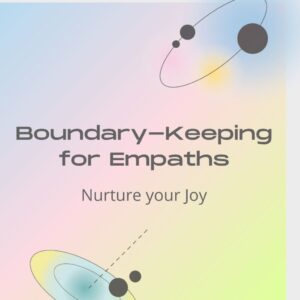Getting to Know Gaia
[fusion_builder_container hundred_percent=”yes” overflow=”visible”][fusion_builder_row][fusion_builder_column type=”1_1″ background_position=”left top” background_color=”” border_size=”” border_color=”” border_style=”solid” spacing=”yes” background_image=”” background_repeat=”no-repeat” padding=”” margin_top=”0px” margin_bottom=”0px” class=”” id=”” animation_type=”” animation_speed=”0.3″ animation_direction=”left” hide_on_mobile=”no” center_content=”no” min_height=”none”][fusion_code]PGRpdiBjbGFzcz0iZ2V0dHkgZW1iZWQgaW1hZ2UiIHN0eWxlPSJiYWNrZ3JvdW5kLWNvbG9yOiNmZmY7ZGlzcGxheTppbmxpbmUtYmxvY2s7Zm9udC1mYW1pbHk6J0hlbHZldGljYSBOZXVlJyxIZWx2ZXRpY2EsQXJpYWwsc2Fucy1zZXJpZjtjb2xvcjojYTdhN2E3O2ZvbnQtc2l6ZToxMXB4O3dpZHRoOjEwMCU7bWF4LXdpZHRoOjUwOHB4OyI+PGRpdiBzdHlsZT0ib3ZlcmZsb3c6aGlkZGVuO3Bvc2l0aW9uOnJlbGF0aXZlO2hlaWdodDowO3BhZGRpbmc6NjYuNzMyMjgzJSAwIDAgMDt3aWR0aDoxMDAlOyI+PGlmcmFtZSBzcmM9Ii8vZW1iZWQuZ2V0dHlpbWFnZXMuY29tL2VtYmVkLzU0NzU0MTI5MT9ldD1WY25rS1doVFJQVjRvT2NhM3haYWtRJnZpZXdNb3JlTGluaz1vZmYmc2lnPWVEV0pobmlDd1Vvb3BJNjVwNmdGY3VkU0FtYWhWbkpCNzA2QXl5a1FKM2c9IiB3aWR0aD0iNTA4IiBoZWlnaHQ9IjMzOSIgc2Nyb2xsaW5nPSJubyIgZnJhbWVib3JkZXI9IjAiIHN0eWxlPSJkaXNwbGF5OmlubGluZS1ibG9jaztwb3NpdGlvbjphYnNvbHV0ZTt0b3A6MDtsZWZ0OjA7d2lkdGg6MTAwJTtoZWlnaHQ6MTAwJTsiPjwvaWZyYW1lPjwvZGl2PjxwIHN0eWxlPSJtYXJnaW46MDsiPjwvcD48ZGl2IHN0eWxlPSJwYWRkaW5nOjA7bWFyZ2luOjAgMCAwIDEwcHg7dGV4dC1hbGlnbjpsZWZ0OyI+PGEgaHJlZj0iaHR0cDovL3d3dy5nZXR0eWltYWdlcy5jb20vZGV0YWlsLzU0NzU0MTI5MSIgdGFyZ2V0PSJfYmxhbmsiIHN0eWxlPSJjb2xvcjojYTdhN2E3O3RleHQtZGVjb3JhdGlvbjpub25lO2ZvbnQtd2VpZ2h0Om5vcm1hbCAhaW1wb3J0YW50O2JvcmRlcjpub25lO2Rpc3BsYXk6aW5saW5lLWJsb2NrOyI+VmlldyBpbWFnZTwvYT4gfCA8YSBocmVmPSJodHRwOi8vd3d3LmdldHR5aW1hZ2VzLmNvbSIgdGFyZ2V0PSJfYmxhbmsiIHN0eWxlPSJjb2xvcjojYTdhN2E3O3RleHQtZGVjb3JhdGlvbjpub25lO2ZvbnQtd2VpZ2h0Om5vcm1hbCAhaW1wb3J0YW50O2JvcmRlcjpub25lO2Rpc3BsYXk6aW5saW5lLWJsb2NrOyI+Z2V0dHlpbWFnZXMuY29tPC9hPjwvZGl2PjwvZGl2Pg==[/fusion_code][fusion_text]Many of us living in big cities may be wondering how we can connect with the natural world in a meaningful way. Some of us don’t even know what that truly entails. We may go for the occasional walk in a park, and our interactions with wildlife might be as extensive as feeding the neighborhood cats. But how do we bridge the divide?
When I was young (and still today), I’d love throwing myself into random places where trees grew crooked, grass reached high, and strange critters roamed about. For me, green literally meant go! This was often a sacred experience, and something inside me yearned to merge with my surroundings, to feel Gaia’s pulse.
Our ancient ancestors, living in the Paleolithic era, were very much in tune with their environments. They had to be, in order to hunt and gather food well. Rich stories emerged from these tribes, personifying the forces of nature, and rituals developed to commune with and appease them. We can see vestiges of this life today in indigenous tribes around the world.
In the Industrial West, we could judge such traditions as unevolved or even absurd—but look at where we are. We’re wreaking havoc on our planet, something which will one day come back to bite us all, unless we change. The way to change is understanding. The way to understanding, in this case, is becoming aware of our relationship with nature, and how all things are interconnected.
How do we do this? Here are some simple practices that helped me:
- Explore. Find the most natural setting you can, even if it is a patch of grass outside your apartment complex. Be observant, with the curiosity and enthusiasm of a child. If you get a little dirty, that’s fine. Nature is dirty! Using all of your senses, feel out your surroundings—smell, touch, listen, look. Even taste, if you KNOW something that is edible….or simply taste the air. When you return to the “normal world,” try this experiment again, in your modern settings. What sort of animals are around you? Plants you’ve never seen? Floral smell you’ve never paid attention to? Instead of swatting away spiders, take a minute to check them out, how they act, how many eyes they have. Then let them free outside.
- Imagine. For the sheer hell of it, try to see if you can “communicate” with the rocks, trees, and plants you come across. Imagine you’re having a dialogue with them. What would they say? What would be their personalities? Keep a level head, of course, but try to have fun with this. You might uncover some interesting new insights.
- Commune. Sit on the ground, near a tree, or by a body of water—really, anywhere in nature. Relax. Let your thoughts flow without getting caught up in them. Focus on your body. Then focus on the sensations you have – the texture of the ground, the feel of the air, the sounds around you, the smells. This is similar to the first exercise, but let yourself go this time. Be completely in the Here and Now. Try to feel as if you are becoming your surroundings. How does that feel? Let this be your sole attention. Allow all other thoughts to pass by like clouds until you forget about them.
- Partner. Nature can be our ally. To realize this more, try to figure out a project that immerses you in nature or is directly dependent on it. You could construct an art piece that uses natural materials, i.e., pine needles, bark, branches, leaves, stones, feathers, etc. You could grow a garden, even a little window garden from a pot or wooden box. Maybe you could study up on medicinal or edible wild plants, and go searching for them. Ever build a rainwater collection unit? It could be fun. Get creative. Please be conscientious with what you take – don’t hoard and don’t disrupt an ecosystem.
- Respect. Show nature you care by cutting your energy usage, carpooling or riding your bike, recycling, planting trees, donating money to help protect wildlife or the rainforests, and not littering. Give friendly reminders to others, as well.
These are just some basic ideas to get you started on the path of building a relationship with nature. It’s the Gaia Mother of us all, and we would prosper by giving Her the respect She deserves.
How do you connect with nature? Please share below![/fusion_text][/fusion_builder_column][fusion_builder_column type=”1_1″ background_position=”left top” background_color=”” border_size=”” border_color=”” border_style=”solid” spacing=”yes” background_image=”” background_repeat=”no-repeat” padding=”” margin_top=”0px” margin_bottom=”0px” class=”” id=”” animation_type=”” animation_speed=”0.3″ animation_direction=”left” hide_on_mobile=”no” center_content=”no” min_height=”none”][fusion_code]PGRpdiBjbGFzcz0iZ2V0dHkgZW1iZWQgaW1hZ2UiIHN0eWxlPSJiYWNrZ3JvdW5kLWNvbG9yOiNmZmY7ZGlzcGxheTppbmxpbmUtYmxvY2s7Zm9udC1mYW1pbHk6J0hlbHZldGljYSBOZXVlJyxIZWx2ZXRpY2EsQXJpYWwsc2Fucy1zZXJpZjtjb2xvcjojYTdhN2E3O2ZvbnQtc2l6ZToxMXB4O3dpZHRoOjEwMCU7bWF4LXdpZHRoOjUwN3B4OyI+PGRpdiBzdHlsZT0ib3ZlcmZsb3c6aGlkZGVuO3Bvc2l0aW9uOnJlbGF0aXZlO2hlaWdodDowO3BhZGRpbmc6NjYuNjY2NjY3JSAwIDAgMDt3aWR0aDoxMDAlOyI+PGlmcmFtZSBzcmM9Ii8vZW1iZWQuZ2V0dHlpbWFnZXMuY29tL2VtYmVkLzUzNjk4NTU0MT9ldD1VUklzbXBZclN2Tk5UZzVGRjlsckVRJnZpZXdNb3JlTGluaz1vZmYmc2lnPThJMzRwaldmZWVrelFmQzdxeWtEQWgzbHllblNtY3VkalBzVXJDVDNBNUk9IiB3aWR0aD0iNTA3IiBoZWlnaHQ9IjMzOCIgc2Nyb2xsaW5nPSJubyIgZnJhbWVib3JkZXI9IjAiIHN0eWxlPSJkaXNwbGF5OmlubGluZS1ibG9jaztwb3NpdGlvbjphYnNvbHV0ZTt0b3A6MDtsZWZ0OjA7d2lkdGg6MTAwJTtoZWlnaHQ6MTAwJTsiPjwvaWZyYW1lPjwvZGl2PjxwIHN0eWxlPSJtYXJnaW46MDsiPjwvcD48ZGl2IHN0eWxlPSJwYWRkaW5nOjA7bWFyZ2luOjAgMCAwIDEwcHg7dGV4dC1hbGlnbjpsZWZ0OyI+PGEgaHJlZj0iaHR0cDovL3d3dy5nZXR0eWltYWdlcy5jb20vZGV0YWlsLzUzNjk4NTU0MSIgdGFyZ2V0PSJfYmxhbmsiIHN0eWxlPSJjb2xvcjojYTdhN2E3O3RleHQtZGVjb3JhdGlvbjpub25lO2ZvbnQtd2VpZ2h0Om5vcm1hbCAhaW1wb3J0YW50O2JvcmRlcjpub25lO2Rpc3BsYXk6aW5saW5lLWJsb2NrOyI+VmlldyBpbWFnZTwvYT4gfCA8YSBocmVmPSJodHRwOi8vd3d3LmdldHR5aW1hZ2VzLmNvbSIgdGFyZ2V0PSJfYmxhbmsiIHN0eWxlPSJjb2xvcjojYTdhN2E3O3RleHQtZGVjb3JhdGlvbjpub25lO2ZvbnQtd2VpZ2h0Om5vcm1hbCAhaW1wb3J0YW50O2JvcmRlcjpub25lO2Rpc3BsYXk6aW5saW5lLWJsb2NrOyI+Z2V0dHlpbWFnZXMuY29tPC9hPjwvZGl2PjwvZGl2Pg==[/fusion_code][/fusion_builder_column][/fusion_builder_row][/fusion_builder_container]

